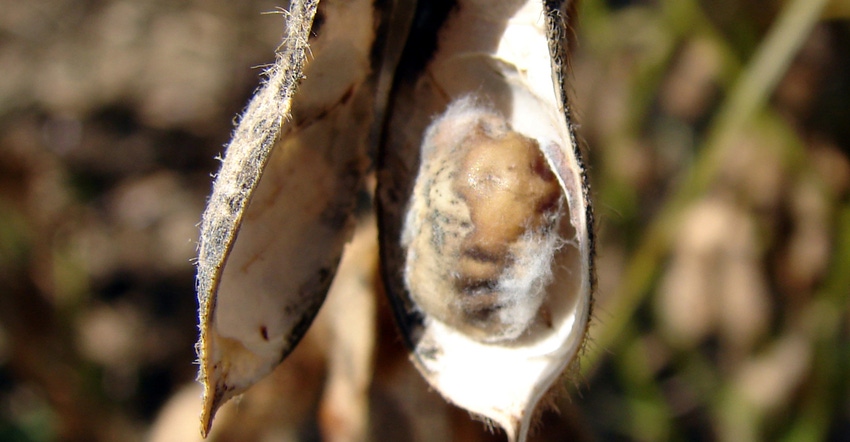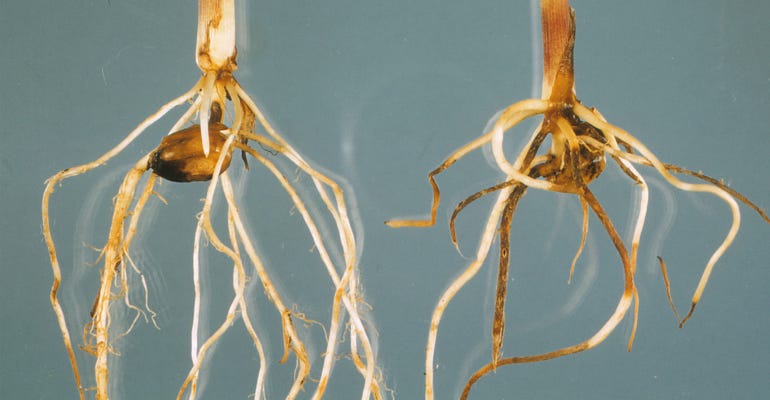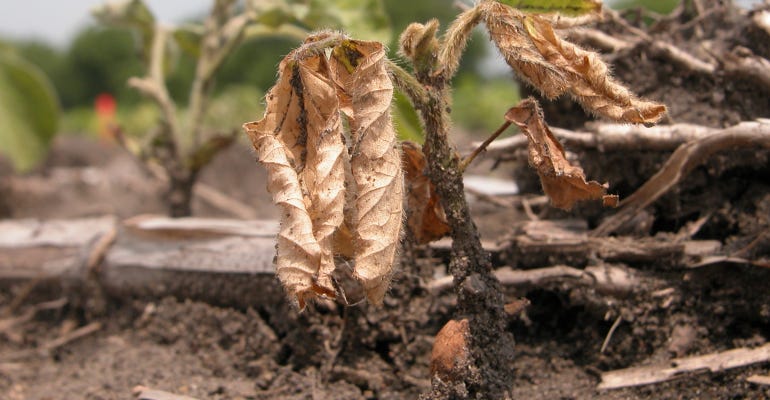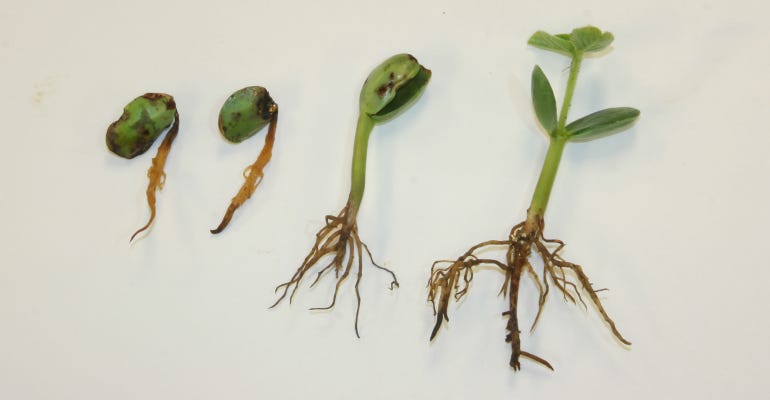April 22, 2019

Spring 2019 hasn’t felt much like spring. As the number of cold and rainy days mounts, it forces fieldwork into smaller and smaller windows. While there isn’t much to like about late springs, such as this one, we’ll slog through it, literally.
With most of the state in the 90th percentile or more in terms of soil moisture, many of us will be battling wet soils all spring long. Let’s look at some last-minute ideas about how to deal with that risk, along with a few other thoughts as we try to survive planting season.
Soybean disease risk higher
It would help with planting progress, and probably everyone’s mood, if we could string together some warm, sunny spring days. A recent article from a couple of our ISU plant pathologists — Alison Robertson and Daren Mueller — reminded me that even if the weather warms up, disease issues can still be a factor. A few key points they make:
Compaction. Wet and possibly compacted soils from last fall and early-season planting may expose soybean seed to seedling disease, such as phytophthora root and stem rot, and pythium seedling blight and root rot. With moist soils, even high-quality seed is at risk for infection by these pathogens.

CORN SEEDLINGS: Even high-quality seed isn’t immune to diseases in moist, cool soil. Root rots in corn can be caused by several pathogens, including pythium, fusarium and rhizoctonia.

Root rot. Phytophthora can infect soybeans at any growth stage. Root rot is more severe in no-till fields, poorly drained soils or low areas prone to flooding. This pathogen is an oomycete (water mold), which means it can move through and survive in water. When soil temperatures reach about 60 degrees F and are saturated, oospores of the pathogen germinate, and infection of plants occurs. Warm, saturated soils, especially right after planting, are conducive to disease. Seed treatments that include metalaxyl, mefenoxam or ethaboxam fungicides target oomycetes and can provide some protection.

PHYTOPHTHORA: Shown here in early growth of a soybean plant, phytophthora can affect beans at any growth stage.

Pythium. This oomycete pathogen can cause both seed and root rotting. Pythium is prevalent in the northern U.S. and is capable of infecting plants at lower temperatures, between 50 and 60 degrees F. Planting in cold, wet soil should be avoided to reduce infection. Seed treatments targeting oomycetes can be effective. Reduced sensitivity to metalaxyl, mefenoxam and ethaboxam has been documented in some species.

PYTHIUM: Planting in cold, wet soil increases the risk of infection from this pathogen, which can cause both seed and root rotting.

Looking at the recommendations and the saturated soils, a lot of bean fields are strong candidates for seed treatments to protect against early-season diseases. And while we hope there is little need for any replanting, if you do have to replant, there may still be a disease threat.
Another disease that comes to mind this spring is sudden death syndrome. Cool, wet field conditions shortly after planting favor early root infections and disease establishment, and wet soils midseason can favor early symptom expression. Along with planting soybean varieties that have some genetic resistance to SDS, seed treatments like fluopyram can help as well.
As our researchers often point out, implementing tactics like these don’t ensure complete control of the disease, but they can minimize yield loss. While weather and field conditions drastically influence SDS severity, soybean cyst nematode injury can make plants more susceptible as well. With SCN present in around three-fourths of Iowa fields, actively managing that pest is critical in limiting SDS.
We’ve touched on inoculants before, with the short version being most of our fields have plenty of rhizobia, so addition of inoculant for that purpose typically isn’t justified. Unfortunately, with widespread flooding this spring, the proportion of acres where inoculant is justified rose significantly.
According to ISU’s Mahdi Al-Kaisi, professor of soil management, when planting soybeans in these fields, seed should be inoculated with Bradyrhizobium japonicum as a precaution to ensure nodulation and nitrogen fixation.
Population considerations
Soybeans are somewhat forgiving when it comes to populations. But “pretty forgiving” leaves room for improvement and fine-tuning, which we’ll discuss in a minute.
A recent multistate soybean production benchmarking survey and various industry surveys line up well, and it looks like most of us in Iowa plant in the range of 135,000 to 165,000 seeds per acre.
ISU recognizes there is no one-size-fits-all recommendation. In general, a short version that fits many fields is “soybean stands beyond 100,000 to 125,000 plants per acre at harvest typically do not result in yield increases great enough to be economically important when the added seed cost is considered.”
Speaking of the soybean production benchmarking survey, another huge “thank you” goes out to you folks — Iowa farmers who sat down and gave us reams of field-specific information from over 1,300 fields planted to soybeans from 2014 to 2017 (and over 9,100 fields in the north-central region of the U.S.).
If you haven’t had a chance yet, search online for Benchmarking Soybean Production Systems in the North Central U.S. It’s packed with useful information, all of which came from farmers’ fields.
The researchers analyzed what producers shared, with goals including identifying yield-limiting factors and ways to reduce or eliminate them. In other words, how do we narrow the “yield gap” between high-yielding and lower-yielding fields? Likely a sore subject for us right now, but planting date had the most consistent impact on yield.
Tillage, drainage system, soybean maturity groups, and fungicide or insecticide applications were also significant factors, sometimes ranking above populations. But as various summaries of the study are quick to point out, there is often more to the story.
Plant populations are important in terms of both yield and economics, and this caught my eye: “Seeding rates are often much higher than those required to achieve a plant density that maximize yield.”
Here in Iowa, we tended to be closer to recommended seeding rates than many other states surveyed. At the lower end of the typical emergence rate of 85% to 90%, our final populations are around 115,000 to 140,000 plants per acre. So, the research says, in general, we can probably cut back planting populations by around 15,000 seeds per acre. That sounds pretty good when looking at the seed bill, and for most fields, it carries little risk of yield penalty. But does one size fit all?
Seeding rate decisions
For that survey, I sat down with farmers and collected info on dozens of fields. Turns out that while a lot of fields fit within the norms, there are a lot of fields where farmers are planting above or below the general recommendations with great success. There may be factors influencing the right population for your situation relating to row spacing, planting dates, disease and soil factors, tillage systems, seed treatments or pest management to name a few.
Folks dealing with white mold tended to get along better at lower populations, for example. Some growers fighting tough-to-control weeds had moved toward narrower rows and increased populations with success.
In working with variable rate seeding, it seems just about the time I see general trends we can use, we’ll see enough contradictory information to make them not so, well, “general.” In reading how the Iowa Soybean Association summarizes what they found with its VRS trials, what stood out to me was that it has the potential to increase profitability in some fields. As the cost of seed increases, it becomes more important, and more research needs to be done on the topic.
Best population for your fields
Recommendations from ISU, ISA and your seed company are a great start and perhaps the best fit for most fields. On-farm trials are a next step to fine-tune, understanding that a spring like 2019 is likely to test your patience, and running some in-field trials is a pretty tough thing to ask. On the other hand, if the weather straightens out, running some population trials may help you go beyond general recommendations and fine-tune to optimize them for your fields.
We are chasing a moving target as varieties, seed costs, soybean prices and other variables shift year to year, so you might find yourself thinking about doing population trials on a consistent basis in the future.
McGrath is the research and Extension coordinator for the Iowa Soybean Research Center at ISU. Email [email protected].
About the Author(s)
You May Also Like






